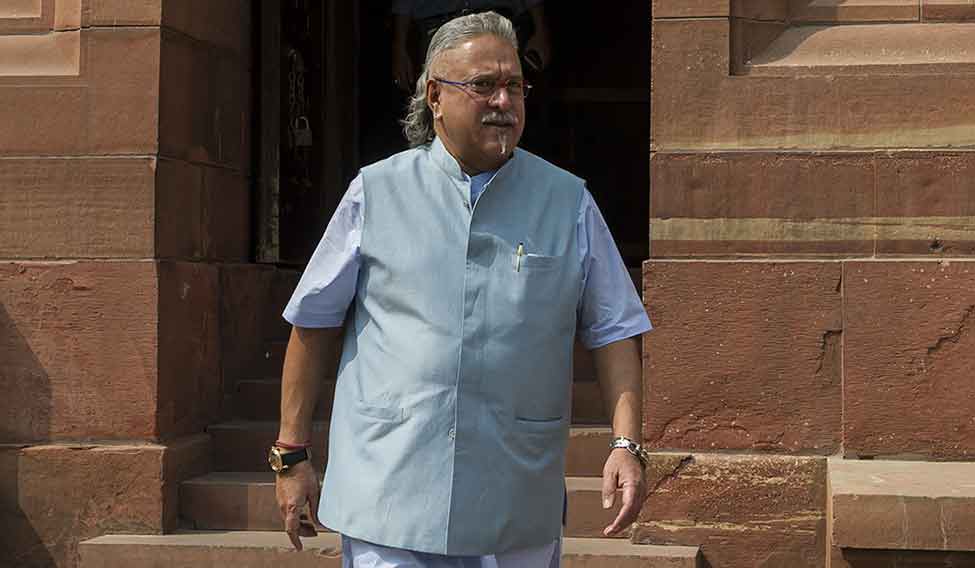Nothing explains Vijay Mallya's character better than his acquisition of the rival liquor maker Shaw Wallace in 2005. “It has been 20 years, three months and four days, to be precise, since I set my sight on Shaw Wallace,” he said. “It was a battle worth it and today I have handsomely won it.”
Clearly, Mallya pursued his passions more keenly than his business. And, that might be the reason he got into the airline business. “The entry into aviation proved to be the undoing of whatever great Mallya had achieved,” said a person who had worked in the UB group. Kingfisher's acquisition of the budget carrier Air Deccan in 2007 was another mistake. It diluted the Kingfisher brand and passenger traffic started moving towards the no-frills carrier, a cash guzzler. “Kingfisher was committing one mistake after another without even waiting to think about its strategy,” said an aviation analyst. “It launched international operations when domestic operations were yet to be stabilised.” A financial crisis struck the group in 2008, as aviation turbine fuel prices were hitting the roof and Kingfisher was borrowing heavily to keep flying. Losses were mounting, as was the interest cost. While the interest cost in financial year 2008 was Rs 103.84 crore, the following year it surged to Rs 778.55 crore. In November 2010, banks restructured Kingfisher’s debt. The consortium of lenders converted Rs 1,355 crore of debt into equity at a 61.6 per cent premium to the market price of Kingfisher Airlines stock. And surprisingly, it sanctioned a fresh loan.
The airline came to a grinding halt after the Directorate General of Civil Aviation suspended its licence in 2012. Its accumulated losses stood at Rs 8,200 crore and it owed Rs 7,000 crore to public sector banks back then. Now it owes Rs 9,091 crore to 17 public sector banks. “Bankers should have pulled the plug in 2010, when deep restructuring was undertaken,” said Deepak Narang, former executive director, United Bank of India.
In 2014, United Bank of India declared Mallya a wilful defaulter. “In 2013, I had written to finance minister P. Chidambaram highlighting the fact that only 10 groups in India account for Rs 5.5 lakh crore of debt, which is 98 per cent of the entire banking system,” said Rajeev Chandrasekhar, MP. “This was an unprecedented concentration of risk and credit, but next to nothing was done by the government or RBI. This was the fertile ground in which a reckless company like Kingfisher was allowed to access credit.”
The question, however, in everybody’s mind is whether banks can recover the Rs 9,000 crore. It is not easy. Given pendency of cases at debt recovery tribunal, it might take a while for an order. There have been 500 hearings at various DRTs since 2013 but not a single order. For assets that are mortgaged, banks will apply Securitisation and Reconstruction of Financial Assets and Enforcement of Security Interest Act, which allows them to carry out an asset sale.
In Mallya's case, however, assets pledged by him have significantly eroded in value. In 2014, banks earned a measly Rs 7.5 crore selling 23 million shares of Kingfisher Airlines. When Mallya pledged those shares, their market value was shown as Rs 745 crore. There were loans taken against Kingfisher’s brand and trademarks which were valued at Rs 4,111 crore by Grant Thornton at that time.
Kingfisher is just an example of taxpayers' money going down the drain. Jayant Sinha, minister of state for finance, recently said that the banking industry was struggling with NPAs worth Rs 4 lakh crore. Public sector banks wrote off Rs 8,033 crore in nine months in 2015-16. “NPA has become a systemic issue now and needs to be handled by involving every stakeholder, at the same time not disrupting the banking industry,” said former financial services secretary D.K. Mittal.
The surge in NPAs has been on account of several factors; first and foremost being the slowdown in global growth. Policy roadblocks in India meant that projects could not be completed on time leading to severe cost overruns. Take, for instance, Jaypee Group. Between 2006 and 2012, it invested heavily in real estate, power and cement. However, as a result of the global financial meltdown, real estate prices nosedived and demand for cement dipped. The group’s debt stood at Rs 85,726 crore in March 2015.
Many companies with high debt have gone for corporate debt restructuring, where the bank and the borrower agree for a new rate of interest and an extended period of debt maturity. “Some of the restructured assets are qualified as standard assets, giving the borrower the leeway to borrow more. This classification might add to the woes of banks as these accounts could be probable NPAs,” said Kalpesh Mehta of Deloitte India.
However, the biggest worry for banks is chasing wilful defaulters. Punjab National Bank last month published details of 904 wilful defaulters who owed more than Rs 10,869 crore to the bank. State Bank of India has declared 1,164 cases of wilful default amounting to Rs 11,705 crore as of September 2015. The Supreme Court has directed the Reserve Bank to submit a list of wilful defaulters on loans of more than Rs 500 crore.
NPAs have severely impacted productivity of public sector banks. For one, they have less money to lend because of the huge amounts trapped as NPAs. Secondly, higher provisioning for bad loans means these banks have been posting losses every quarter, eroding shareholder value. The RBI has now asked banks to undertake strategic debt restructuring in cases where the promoter is not able to turn around the company. In strategic debt restructuring, banks take over the responsibility of the company, removing the promoter and appointing consultants for turnaround.






